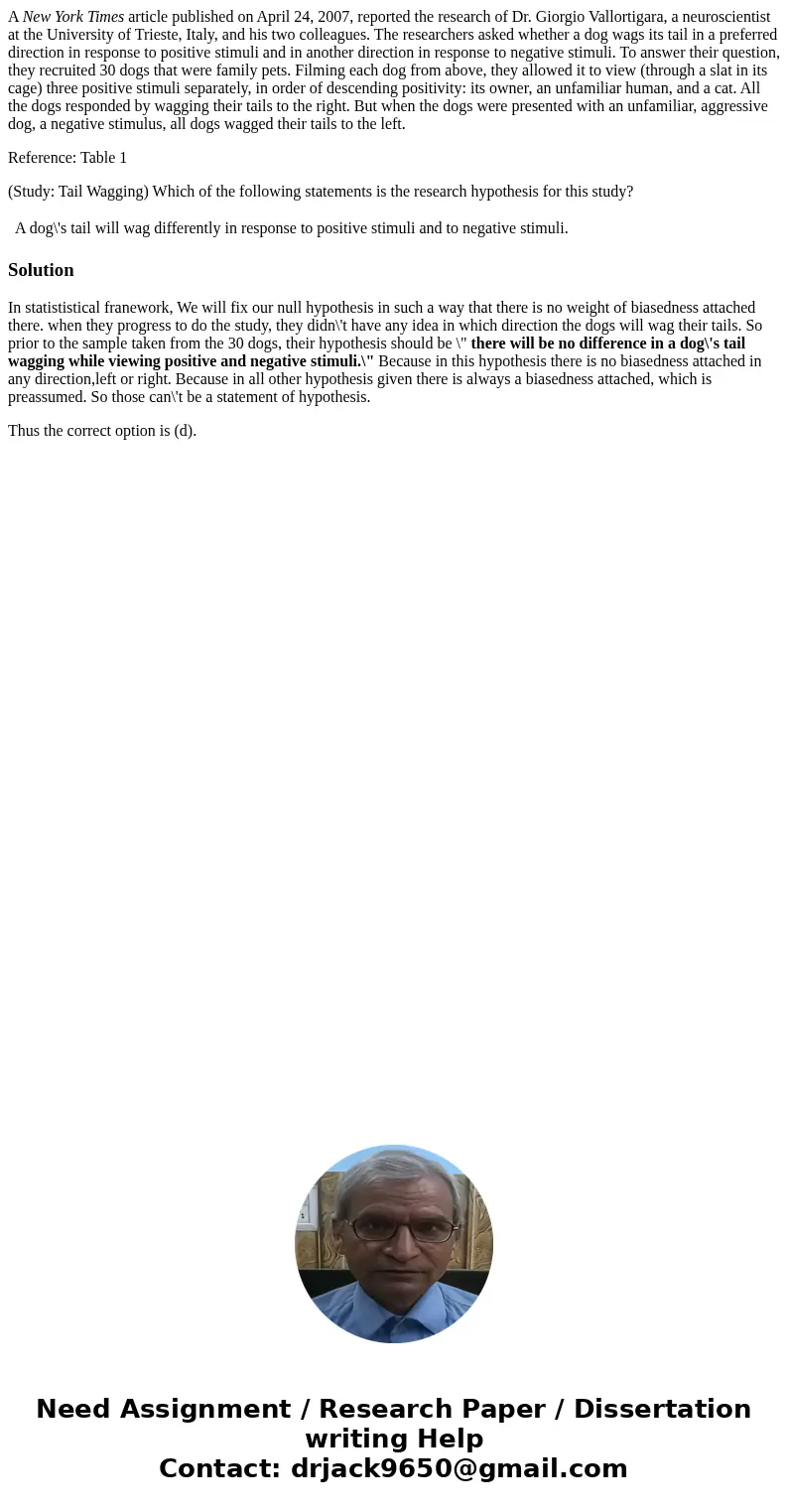A New York Times article published on April 24 2007 reported
A New York Times article published on April 24, 2007, reported the research of Dr. Giorgio Vallortigara, a neuroscientist at the University of Trieste, Italy, and his two colleagues. The researchers asked whether a dog wags its tail in a preferred direction in response to positive stimuli and in another direction in response to negative stimuli. To answer their question, they recruited 30 dogs that were family pets. Filming each dog from above, they allowed it to view (through a slat in its cage) three positive stimuli separately, in order of descending positivity: its owner, an unfamiliar human, and a cat. All the dogs responded by wagging their tails to the right. But when the dogs were presented with an unfamiliar, aggressive dog, a negative stimulus, all dogs wagged their tails to the left.
Reference: Table 1
(Study: Tail Wagging) Which of the following statements is the research hypothesis for this study?
| A dog\'s tail will wag differently in response to positive stimuli and to negative stimuli. |
Solution
In statististical franework, We will fix our null hypothesis in such a way that there is no weight of biasedness attached there. when they progress to do the study, they didn\'t have any idea in which direction the dogs will wag their tails. So prior to the sample taken from the 30 dogs, their hypothesis should be \" there will be no difference in a dog\'s tail wagging while viewing positive and negative stimuli.\" Because in this hypothesis there is no biasedness attached in any direction,left or right. Because in all other hypothesis given there is always a biasedness attached, which is preassumed. So those can\'t be a statement of hypothesis.
Thus the correct option is (d).

 Homework Sourse
Homework Sourse